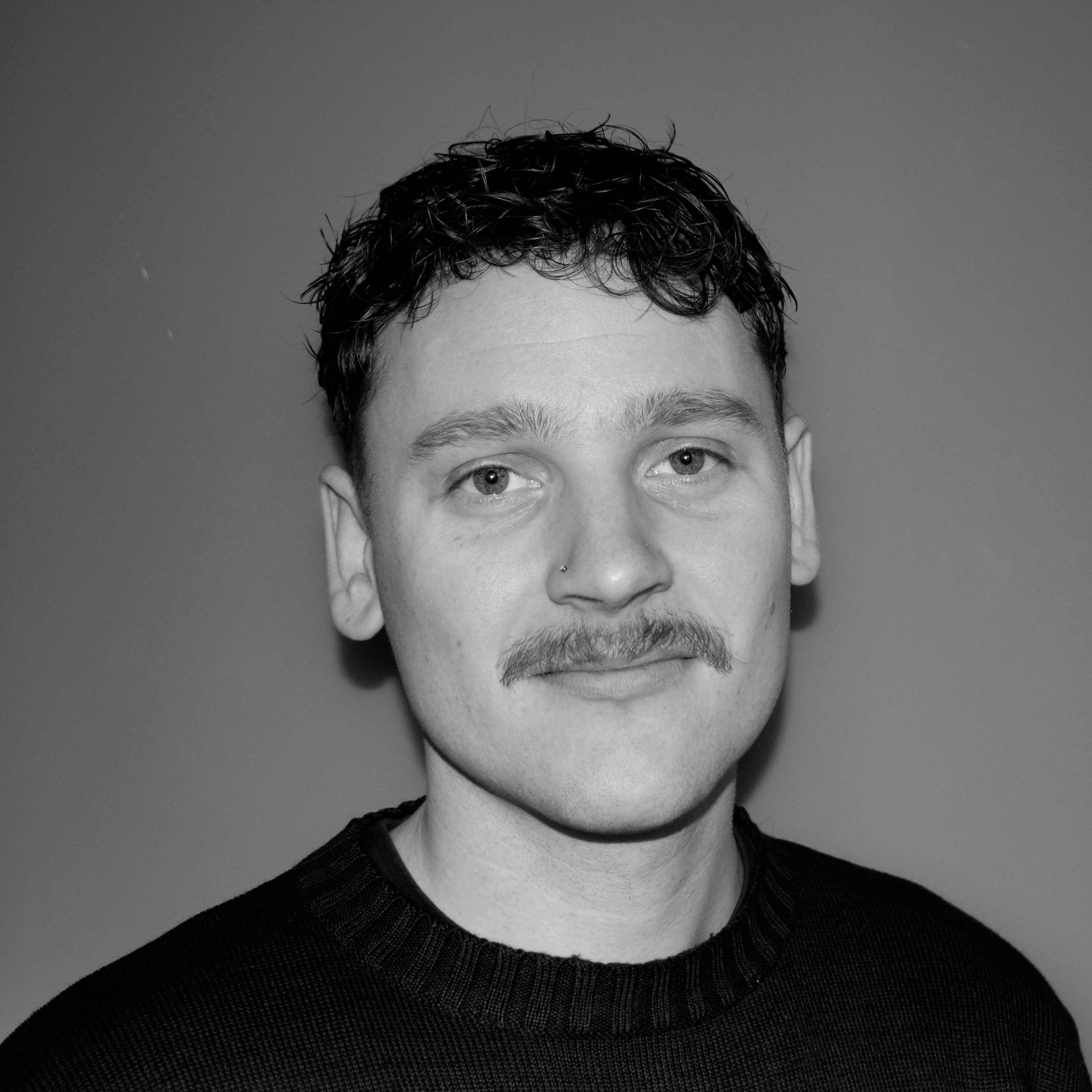Goedemorgen and welcome to ITPro’s live coverage of Cisco Live EMEA 2025.
Today we’re gonna be given an inside look at all of the latest updates Cisco has made across its product lines in networking, security, and collaboration, with AI sure to feature heavily too.
We have a busy day here at the RAI Amsterdam Convention center with the opening keynote set to kick off at 9am CET, so make sure to stay tuned for all the announcements as they happen.
It’s a cold blustery day here in Amsterdam with a rather frigid flurries of snow last night. It looks like none of the snow has stuck, however, and everything is up and running for today’s main event: the opening keynote, due to start in just under an hour.
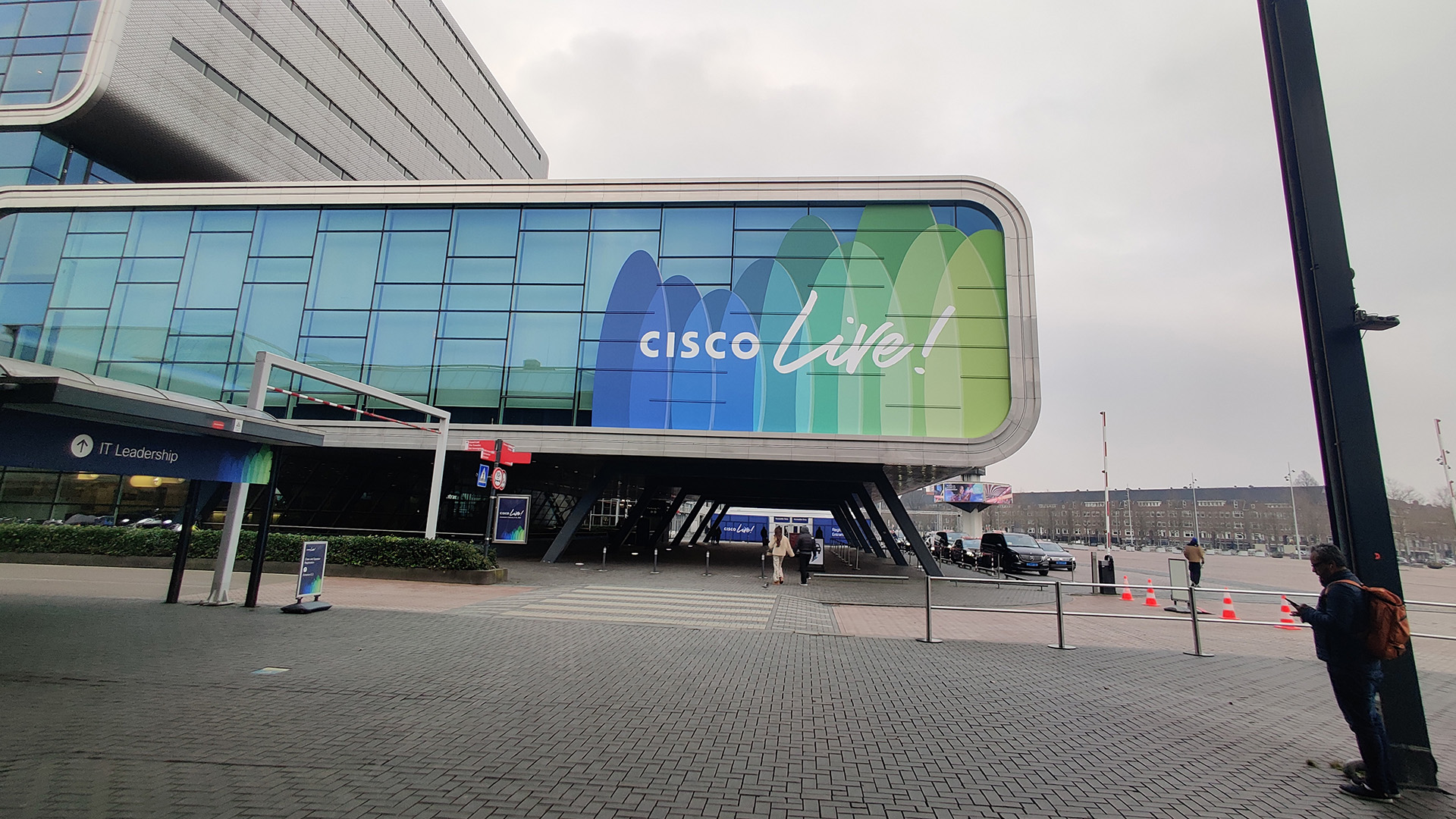
This morning we’ll be hearing from Oliver Tuszik, president of EMEA, as well as a raft of other Cisco execs including Jeetu Patel, EVP and chief product officer; Martin Lund EVP of the Common Hardware Group; and Anurage Dhingra, SVP and GM of Campus Branch and IIoT Networking & Collaboration.
Tom Gillis, SVP and GM of the Cisco Security, Data Center, Internet, & Cloud Infrastructure Group at Cisco and Kamal Hathi, SVP and GM at Splunk, will also be joinging Tuszik and the rest of the team = on stage today to talk all things Cisco.
While we wait for things to get started why not check out some of our previous Cisco coverage that will put today's announcements in context.
Yesterday the press were given an inside look at what it takes to get the RAI convention center up and running for the more than 17,000 attendees who have descended on Amsterdam to learn all about what CIsco has been up to over the last year, and what there is to look forward to for the rest of 2025.
Joe Clake, distinguished services engineer at Cisco, walked us through some of the key figures that go into setting up the impressive WiFi network that keeps all 17,000 connected and able to access super fast speeds while in the conference hall.
Clarke said Cisco brought 500 of their own switches for the job, and has set up more than 600 access points across the exhibition center. The team are continually redeploying extra units using a custom-built network mapping tool that identifies low coverage areas or spots that need extra density.
For example, the team deployed extra high density coverage over the keynote hall to support the roughly 6,000 attendees when they file into the auditorium, which is expected to take place in just under an hour.
This year the entire network is operating on WiFi 7, Clarke said, although there is a backup network for those using legacy devices, and Cisco has transitioned the majority of the traffic to IPv6 also.
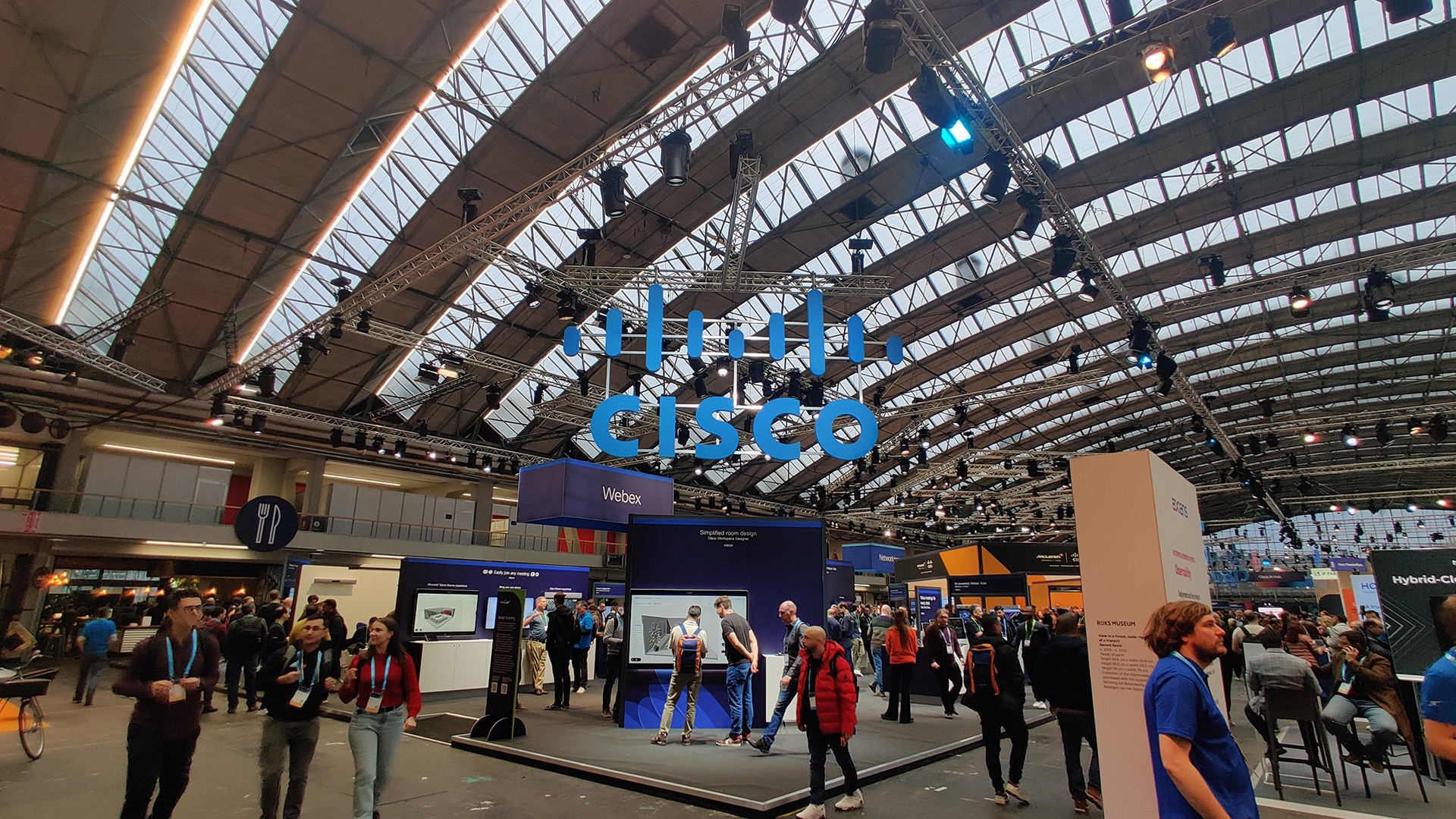
As has become rather typical for these big conferences, things are running a little behind schedule and 9am has passed with little fanfare here at the RAI.
There are still long queues outside the exhibition center, luckily the press are allowed in early.
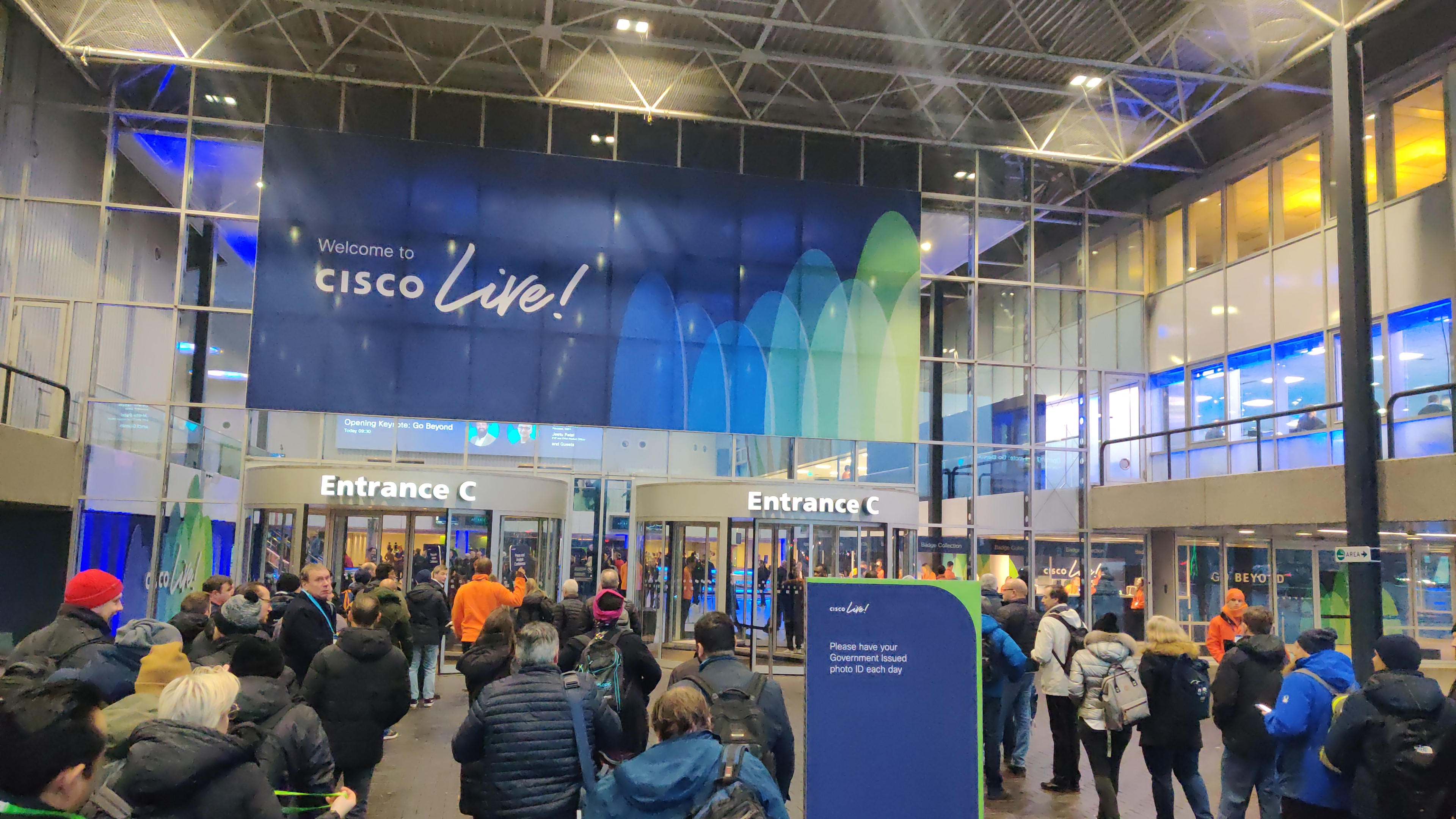
The buzz is definitely building here in Amsterdam, with lots of attendees swirling around the lobby area.
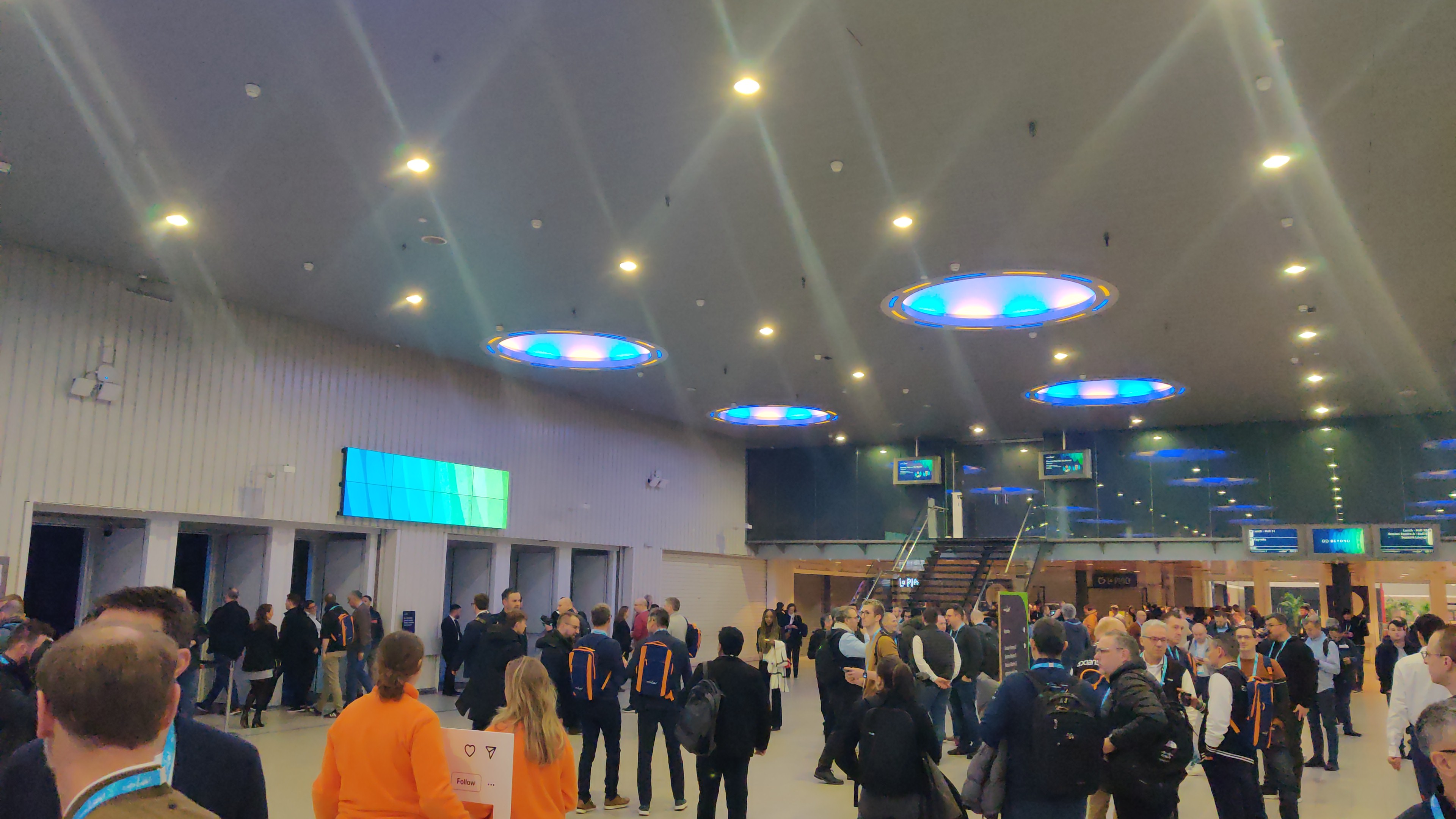
We’re inside the auditorium and the seats are relatively empty but I expect that to change very quickly.
The obligatory DJ is playing something mercifully light on the bass, something that cannot be said for last year’s playlist.
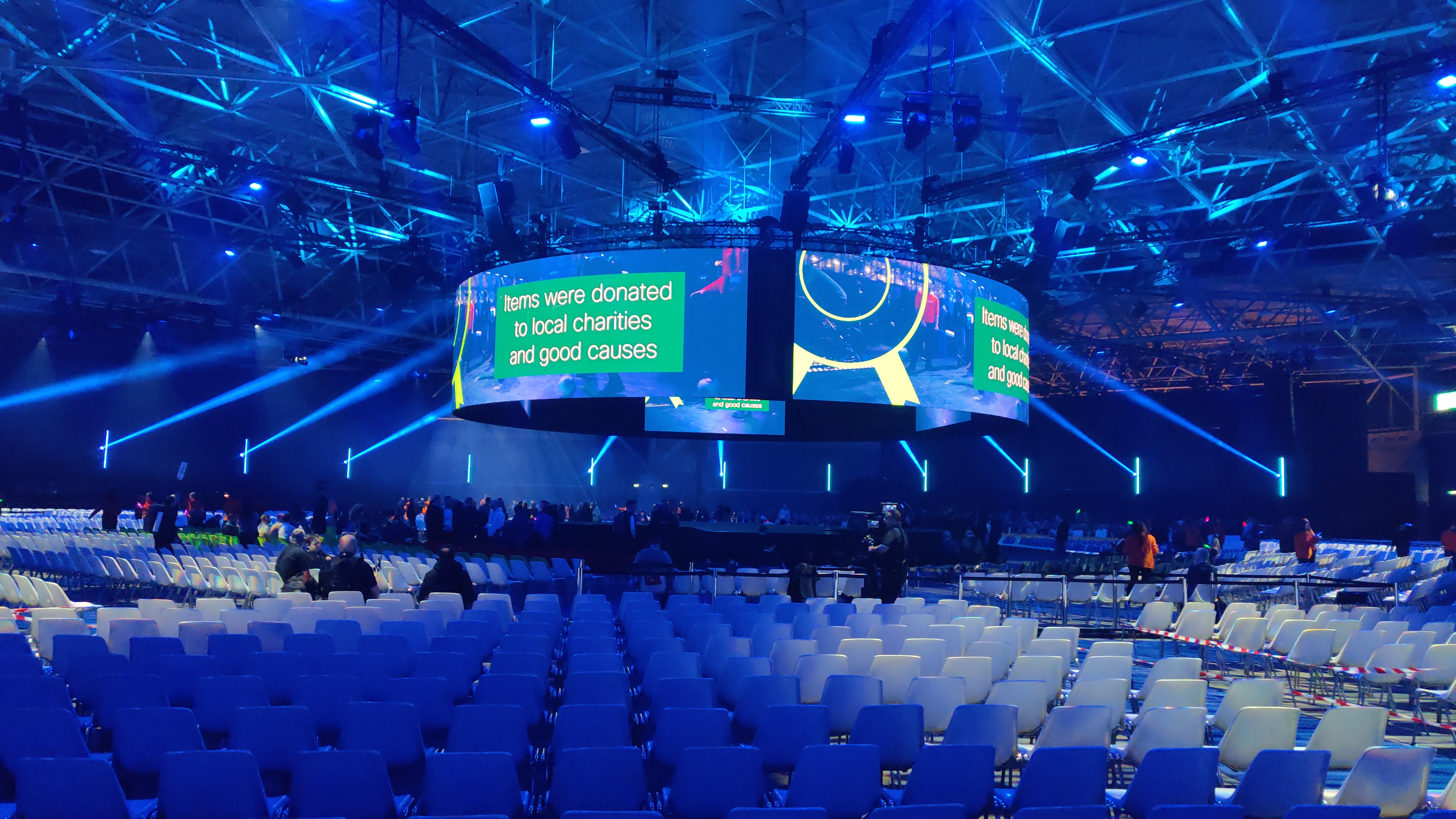
Ok that was very quick, a torrent of attendees has flowed into the auditorium and we are getting closer and closer to capacity. Hopefully we will be getting under way imminently.
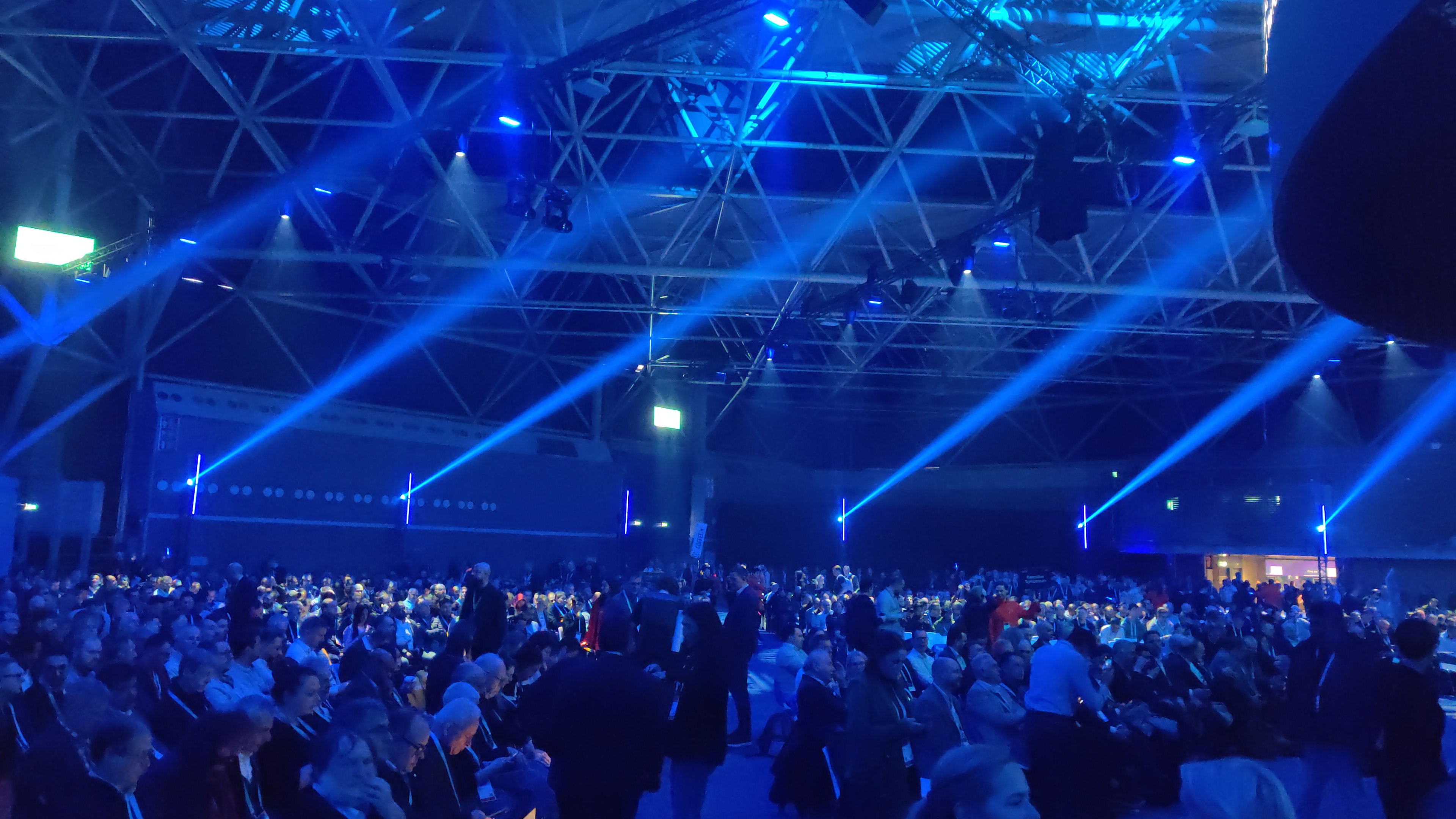
I have spotted Oliver Tuszik, Cisco’s EMEA president, who will be opening the keynote today so that is a good sign.
A literal sign has also popped up with the 'five minutes to go' message, confirming my suspicions.
Tuszik will be outlining the theme of today’s proceedings. The explosion of interest in AI, sparked by the introduction of popular generative AI solutions beginning with ChatGPT in 2022, is reshaping the world of the enterprise, and Tuszik and his colleagues will be discussing the products Cisco is introducing to help its customers adapt to that changing world.
This means making sure customers can meet the changing demands of enterprise AI adoption, monetize the services that spring up in this landscape, and deliver them securely.
But generative AI has also had knock on effects for Cisco's other business segments, with many of the anticipated updates related to how businesses will need to transform for the an era of AI..
Things look like they are getting underway with a very intense piece of video intro running through the rapid explosion of generative AI over the last three or so years, and positioning Cisco as ‘changing the game’ for businesses across sectors.
The old tagline “every company must be a technology company” now becomes “every business must become an AI company”.
Our master of ceremonies, Oliver Tuszik is opening up today's keynote from the crowd, and is now approaching the stage.
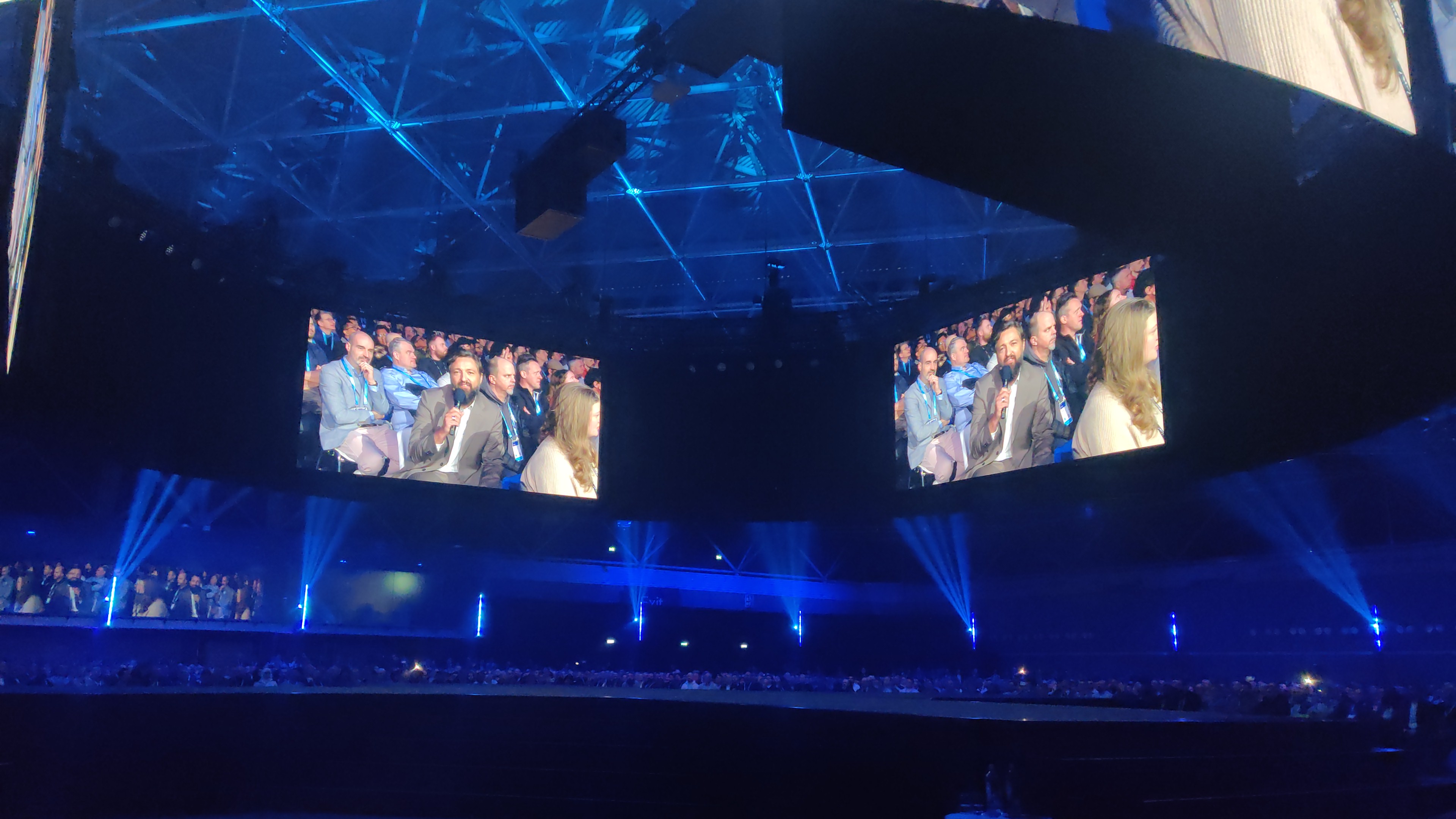
Tuszik goes through the usual pleasantries on the RAI’s panoramic stage, doing his best to engage each section of the crowd, he’ll certainly be getting his steps in today.
Tuszik drops the fact that this year Cisco is celebrating its 40th birthday, greeted with a congratulatory applause from the crowd.
He describes Cisco's humble beginnings on a university campus connecting two networks together, evolving from the network as infrastructure to the network as the integral platform for all businesses.
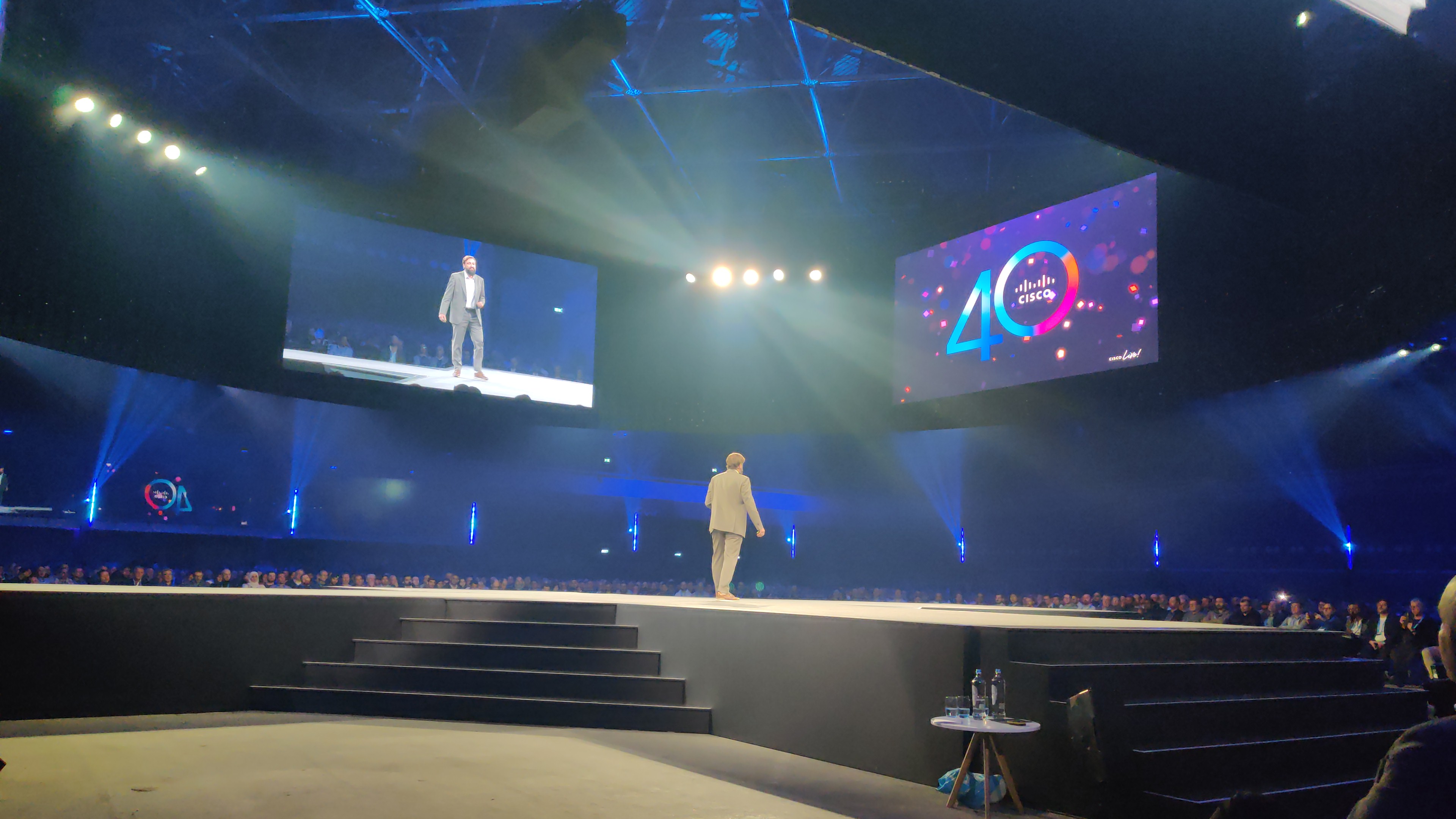
Tuszik blasts through some of technology industry's major eras, with IoT and Cloud described as concrete moments that had differing impacts on the role of the network.
Now with AI, Tuszik says the speed of innovation is "nowhere near anything we've seen before", especially in the lat eight months. He notes that it looks like this innovation is only going to continue to accelerate.
Tuszik is now espousing the importance of experts, citing Cisco's CCIEs. He asks for any attendees who've been CCIE over 25 years.
He finds one whose name I did not catch, but became certified in 1993 and says he was one of the first CCIEs certified worldwide, impressive.
Tuszik promises that Cisco will never stop investing in its certified engineers.
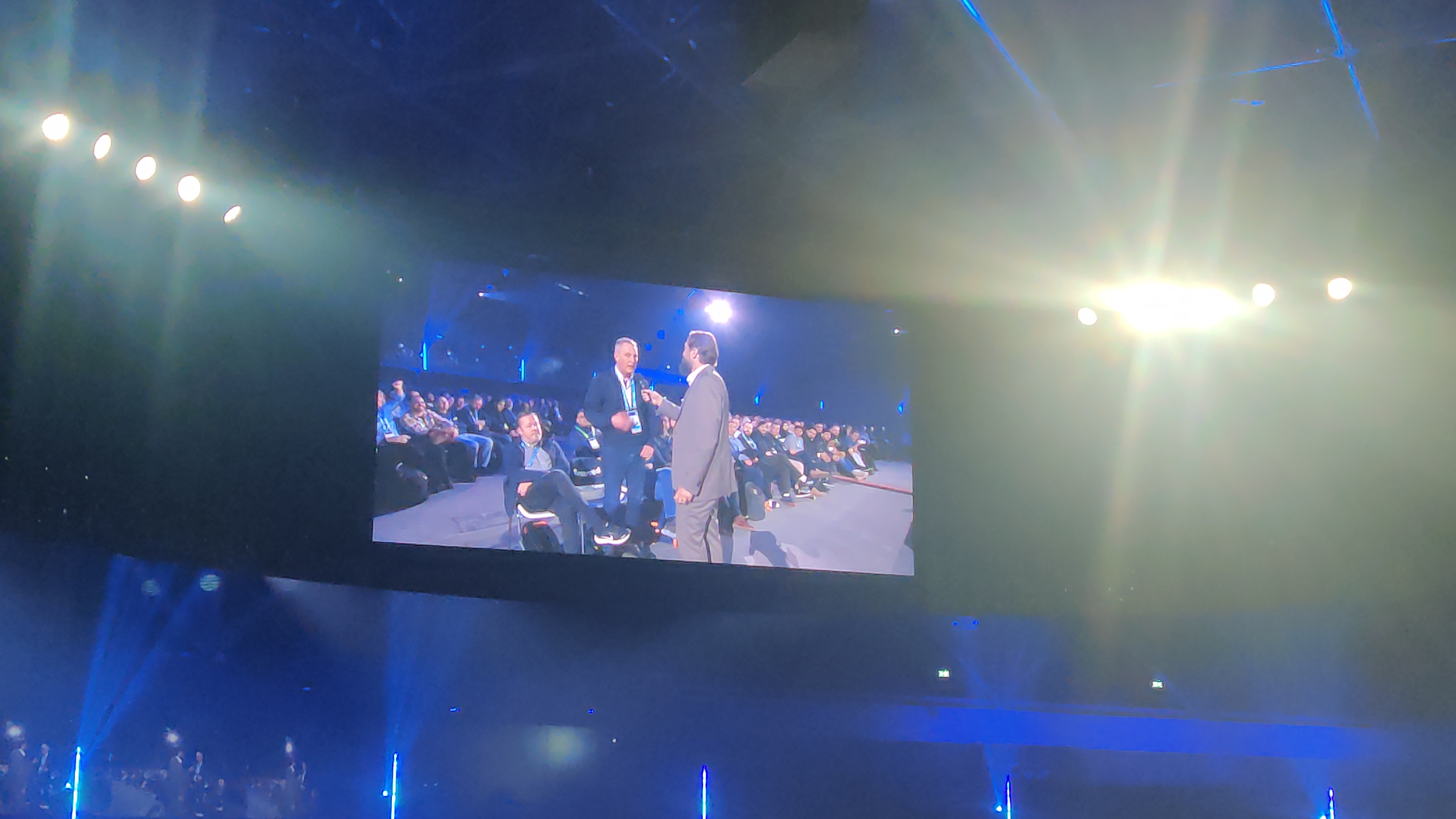
Tuszik cites some Gartner research on the size of the ICT market worldwide, which in some areas of the world is growing faster than GDP.
He falls back to the claim that every business in the world will become a tech company. But this will not be easy he says, there will be big shocks in operational cost, digital transformation strategies , and navigating these changes sustainably.
Moving onto AI, Tuszik concedes that there were some aspects of the AI boom that were 'overhyped', but claims that we are now moving out of this hype cycle and the real value of AI is being revealed.
The industry is emerging from the tunnel of disinformation swirling around AI, Tuszik says.
He cites Cisco's research that found 97% of CEOs plan AI integration but 80% worry gaps in their understanding will hurt their strategic decision-making, and risk falling behind the competition.
Skills gaps, infrastructure challenges, "the complexity you have to deal with is mind blowing", Tuszik warns, and there are not many people you can hire to help remedy this problem.
"This is the main reason everybody is looking for standardizations. Moving away from best of breed and towards automation."
Tuszik says Cisco are committed to helping busisses in three key areas picured below.
He says that if Cisco fails to help businesses meet their challenges in these three areas it is not meeting its standards.
Tuszik says last year the company committed to its platform approach, promising to become more integrated and more open in a landscape where businesses are reliant on a multitude of digital services and hardware.
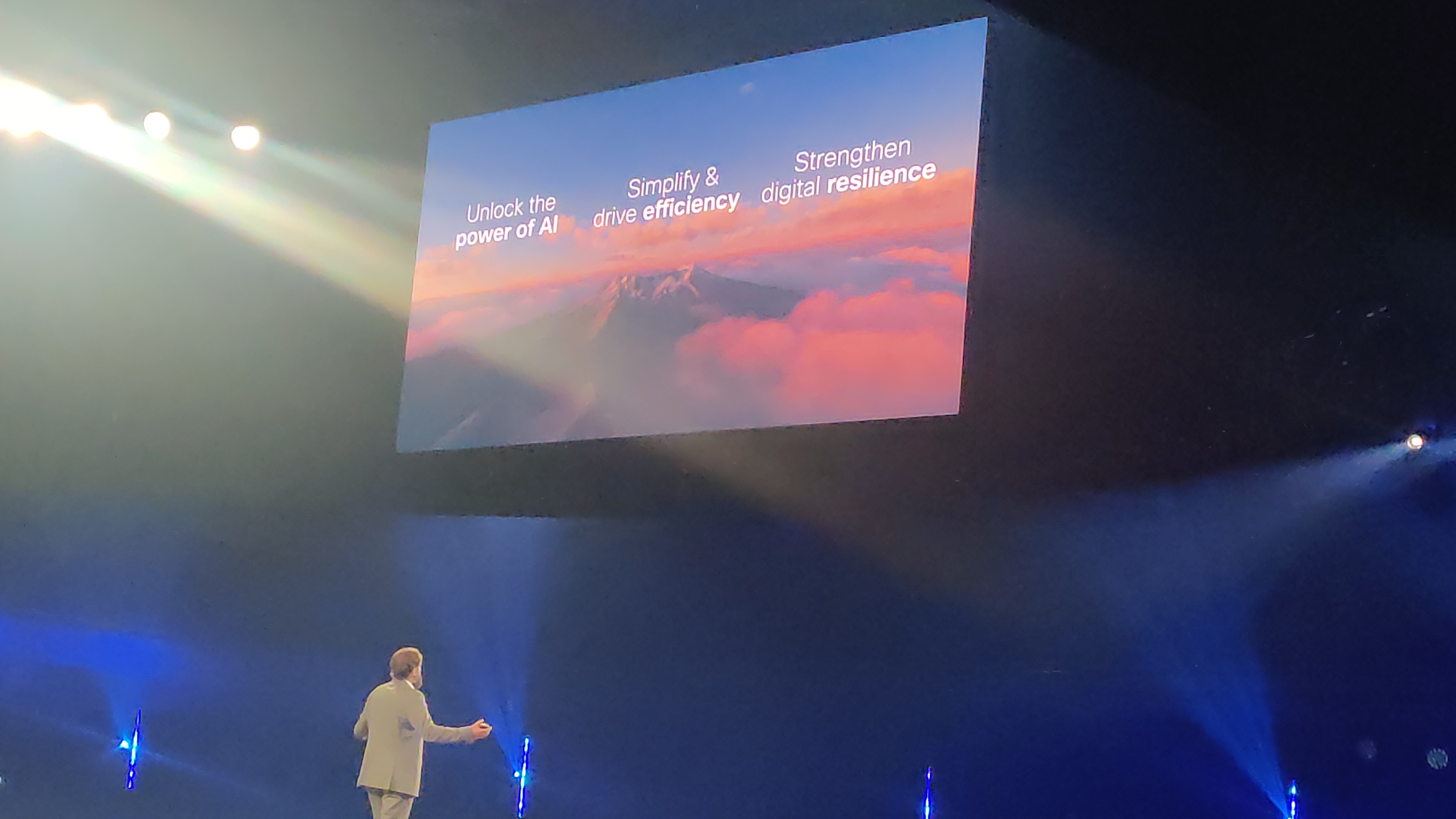
As Tuszik mentions platform, its only right he gives way to Jeetu Patel, EVP and chief product officer at Cisco, who is the platform tsar at Cisco who is now onstage and for some reason praising Tuszik's dance moves.
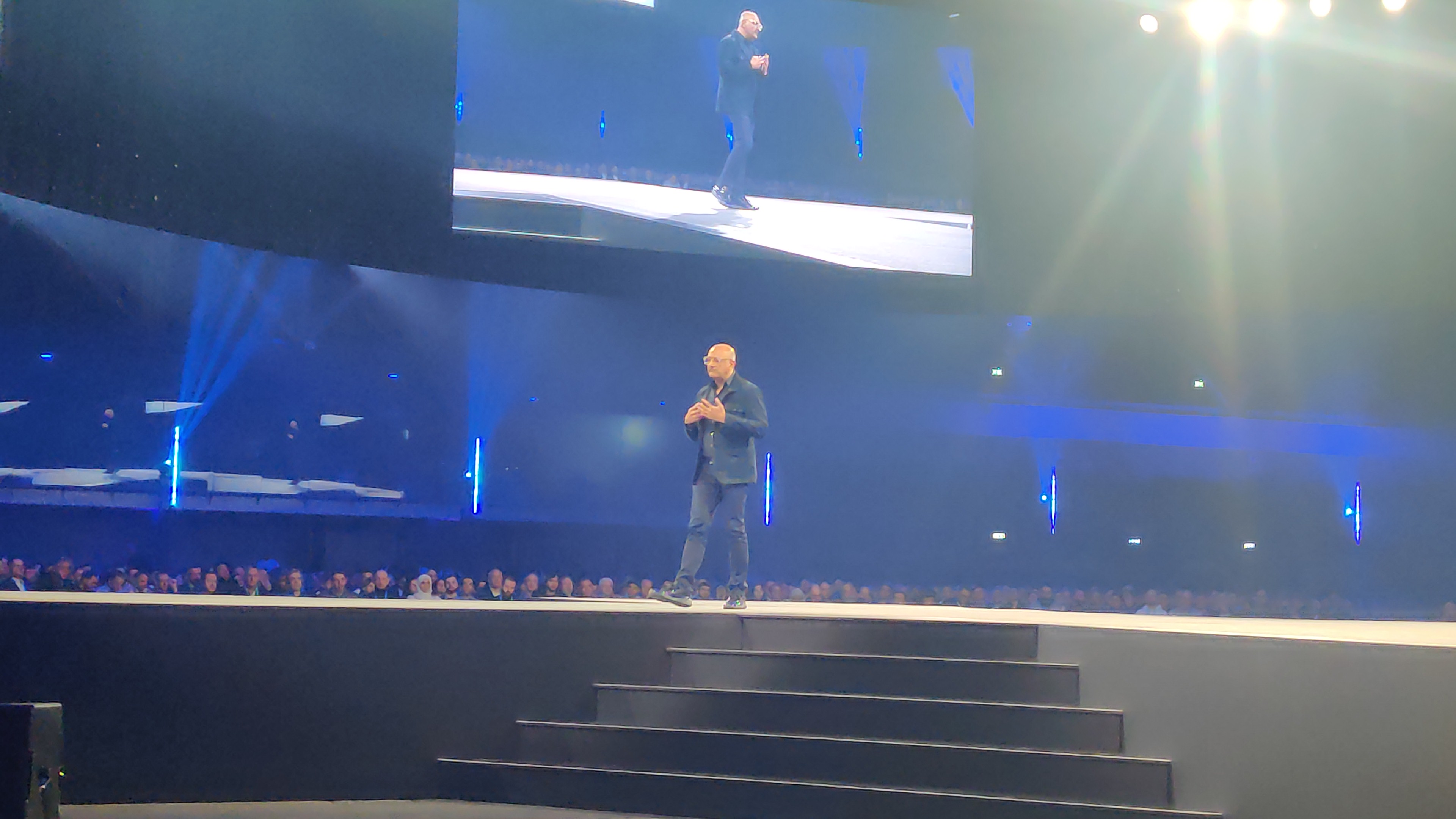
Patel is walking through some of his core philosophies when it comes to product, firstly that quality is 'priority zero'.
He notes that Cisco has had some products that perhaps have not lived up to this mantra in the past, but the firm is relentlessly focused on ensuring every one of their products 'just works'.
He also says Cisco wants to think asymmetrically about the market. Rather than thinking linearly that follows trends Patel wants Cisco to make sure that it isn't playing catch up and actually leapfrogs the market in a way that will redefine how Cisco is not just 10% better than 'our' competition but 10% better than 'your competition'.
With that in mind, Patel now moves on to talking about some recent trends he thinks will have substantial impact, or seismic shifts, on the market going forward.
First is the DeepSeek effect, which means that cost is going down precipitously and as a consequence businesses won't just have tens or hundreds of models, but they might have thousands.
Next is the operator effect, essentially the agentic shift of AI, where users wil be able to get computers to ensure tasks are completed autonomously.
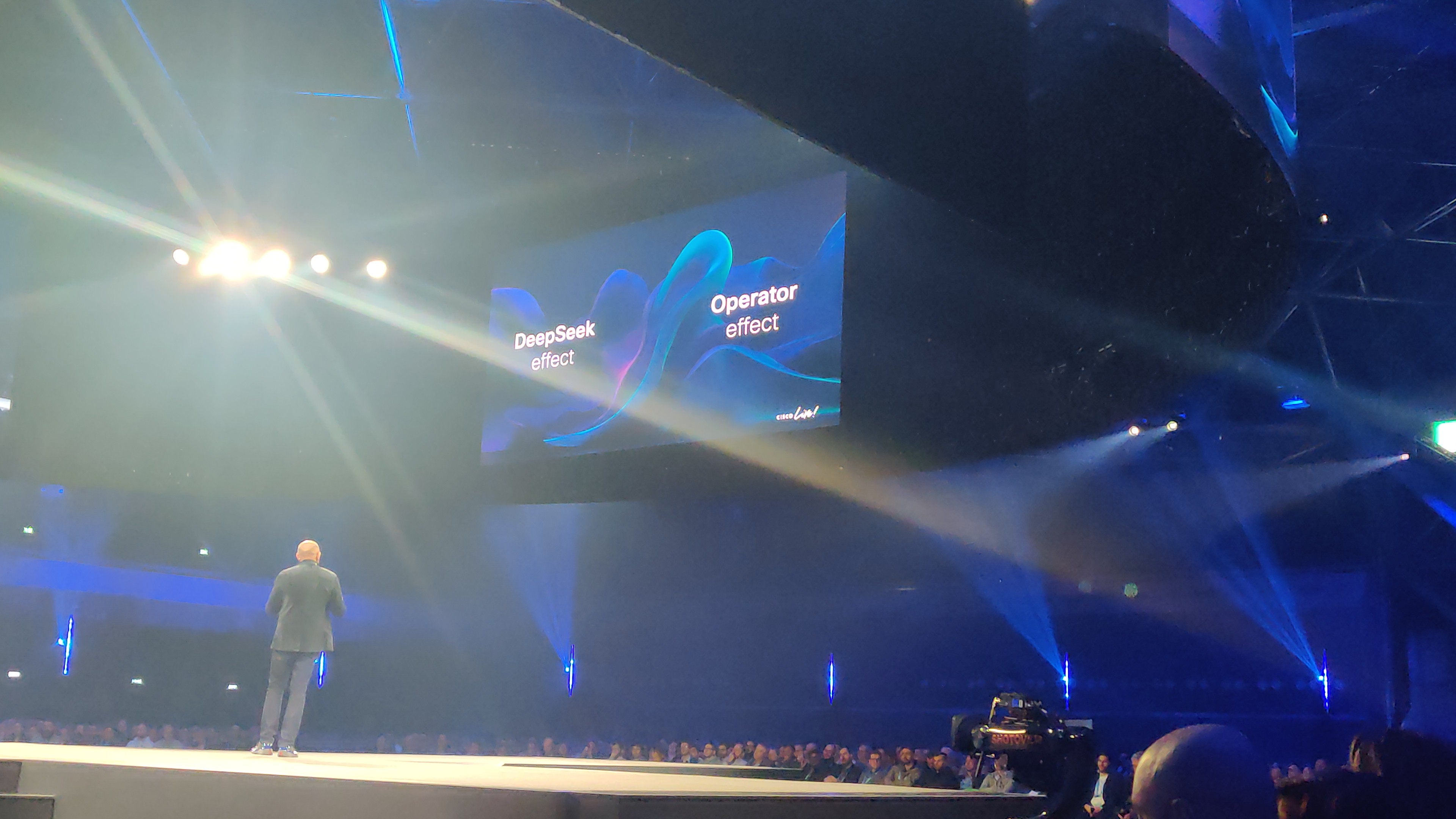
These seismic shifts will introduce new challenges Patel says including what infrastructure looks like, and what the risk looks like attached to these new technologies.
Patel says that Cisco want to leverage three areas in which it believes it has key advantages over the market to help businesses meet these challenges.
These are the platform advantage, silicon advantage, and an AI advantage.
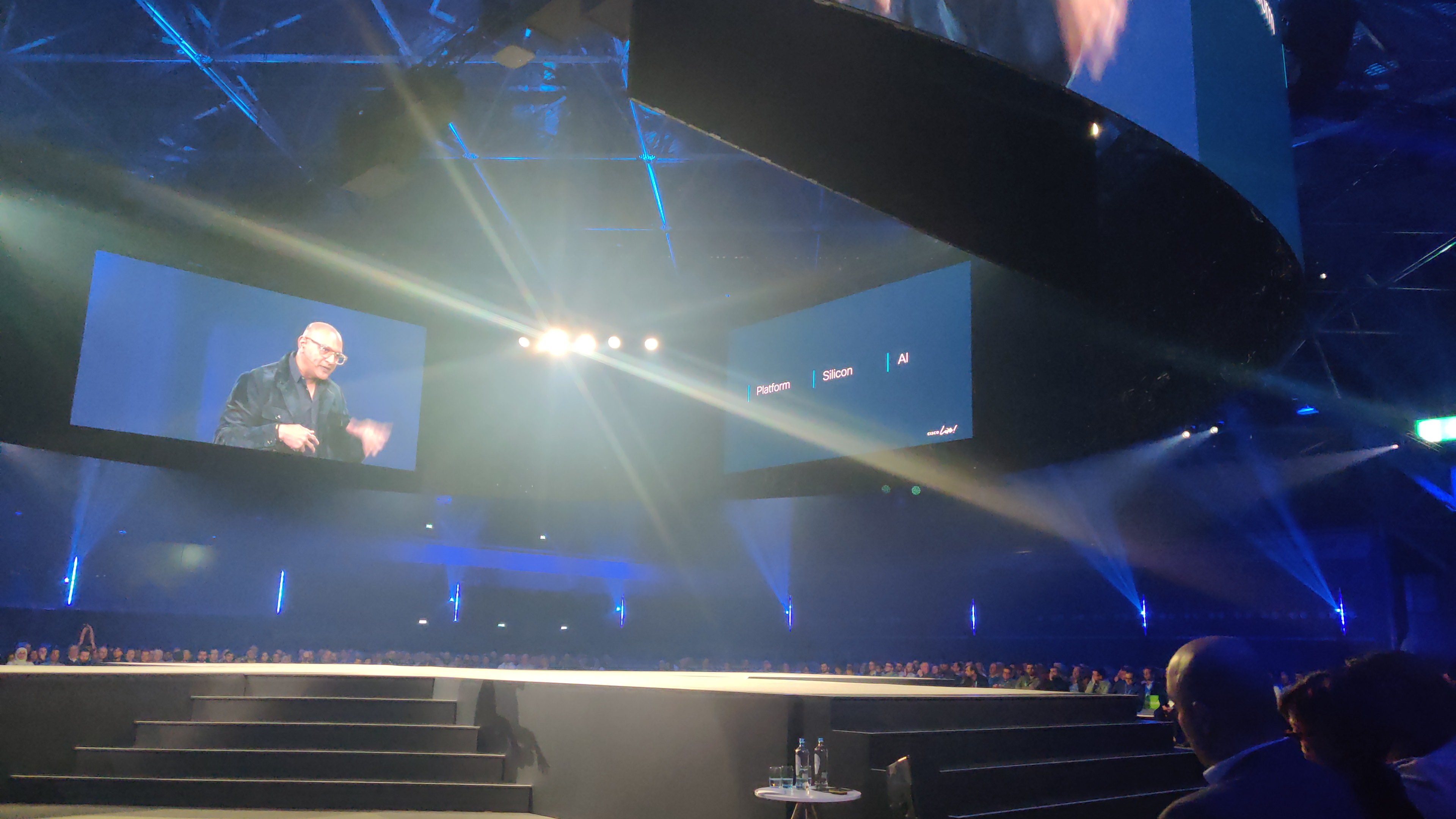
Patel now wants to talk about products, he runs through Cisco recent innovations including its dedicated AI PODS and its Nvidia AI server.
Patel announces the Cisco UCS C854A M8 server which is a flexible AI server using Nvidia MGX reference architecture with a modular design that can be scaled from 2 - 8 GPUs, giving businesses flexibility when it comes to their AI spend.
This is met with some applause and I expect we will hear more about this later where we will get a bit more of a deep dive on this.
Patel quickly moves on to another announcement two new Cisco N9300 Smart Switches with Hypershield.
These are two switches, one that is an on-ramp and the other a top-of-rack switch that feature data processing units (DPUs) built int, meaning that not only do they just switch traffic but they also enable running advanced services such as Cisco's firewalling capability Hypershield directly on the fabric of the network.
This brings Patel to the concept of the Cisco Hybrid Mesh Firewall which uses the N9300 smart switches with Hypershield integration businesses can meet the needs of today’s threat landscape.
It means that businesses can leverage the latest cloud security frameworks, as well as third party firewalls to give a distributed fabric in a hybrid mesh firewall that can be managed through a single pane of glass, being Cisco's Security Cloud Control system.
This, he adds, is available now.
That was an incredibly quick whistle stop tour of some pretty big announcements, and to dig deeper in the impacts of these systems Patel brings on Tom Gillis, SVP and GM of the Cisco Security, Data Center, Internet, & Cloud Infrastructure Group at Cisco.
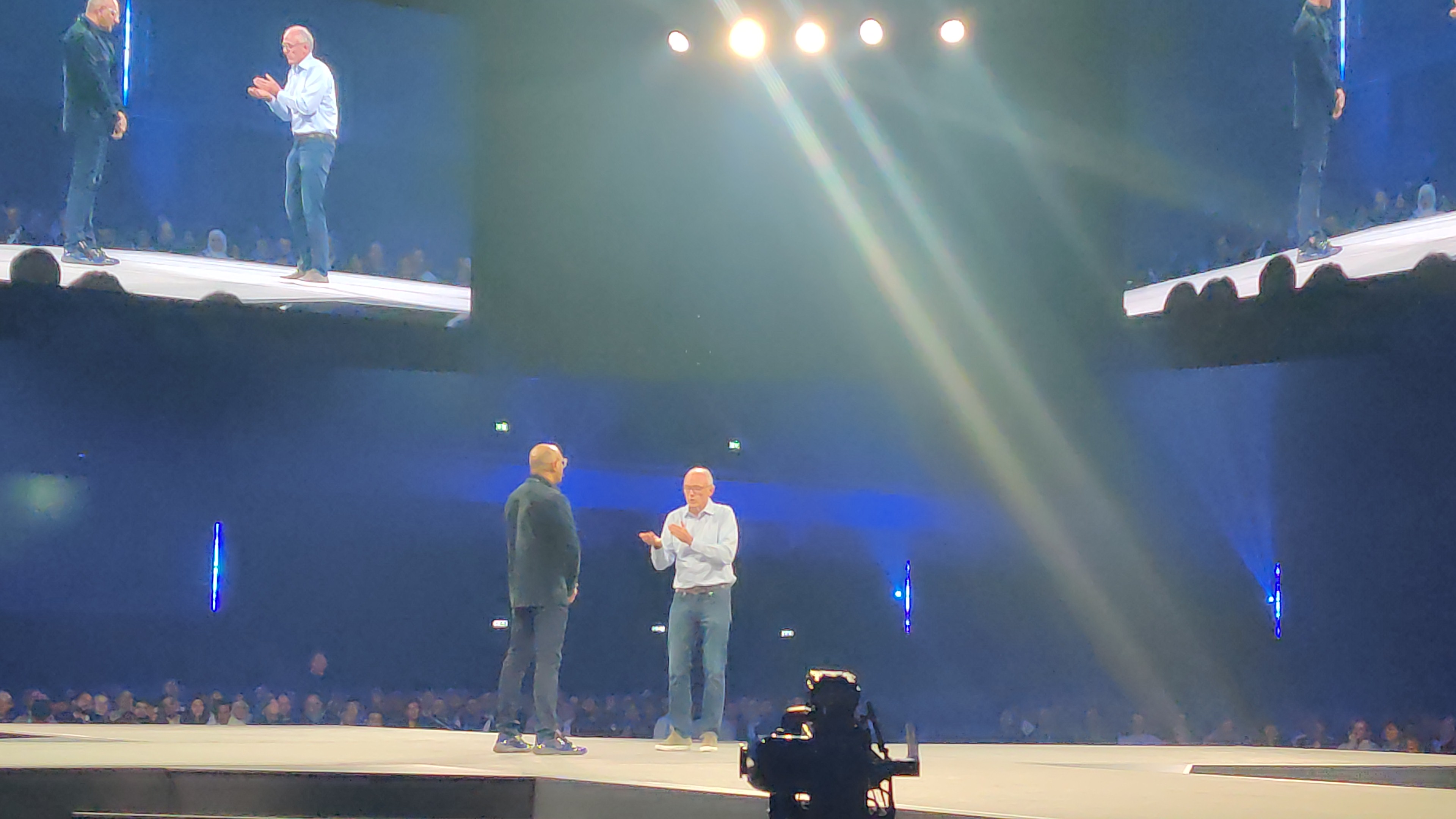
Gillis says this new category of smart switch is the most exciting announcement Patel just made, describing it as the dream of many years.
The addition of the DPUs means businesses can combine a security processor and network processor in one device.
"We want to put controls around the services that surround an application" meaning every microservice gets its own perimeter with an individually configurable layer 7 firewall.
This does sound like a very significant improvement for businesses that are able to take advantage of these smart switches.
One major recent trend we've seen over the last decade is that applications are increasingly distributed and fine-grained, often running across multi-cloud data centers, and are composed of hundreds of thousands of microservices
Recent threat landscape activity from state-sponsored groups like Volt Typhoon show that the era of blind trust is over. Businesses need to validate and inspect every single connection running across distributed applications.
DPUs on the N9300 switches mean users can embed inspection functions onto the fabric of the network via Hypershield, and this is one component of Cisco’s Hybrid Mesh Firewall
Hybrid in that Cisco is also introducing cloud-native integrations so this solution can be deployed natively into all of the different cloud environments regardless of provider (AWS, Azure, Google).
Combines with eBPF to give organizations deep visibility into workloads in the extended network, external workloads, allowing for autonomous segmentation and distributed exploit protection to prevent cyber intruders from moving laterally.
Cisco says it is committed to an open ecosystem, so the mesh firewall will also support third-party firewalls as enforcement points.
"Keep your infrastrucutre", Gillis explains, stating that Cloud Control will sit as the umbrella over these systems and takes control of all of your old tools, and as you modernize you can start to introduce this more advanced infrastructure and "put security inplaces you couldn't imagine".
That's it from Gillis who almost sprints back off the stage.
Now Patel is moving onto securing AI itself, and Cisco's recently launched AI Defense system.
AI Defense was introduced three weeks ago and helps businesses protect their generative AI systems, be that external applications of internally developed tools.
AI applications have introduced a new attack surface for threat actors to target, as well as introducing risk in terms of misuse in the workplace
AI defense is an end-to-end solution that protects both the development and use of generative AI applications.
In terms of external generative AI applications, AI defense allows security teams to discover what generative AI tools people are using and how they are using them. In some businesses using external generative AI tools is banned so this can help them detect their use and block it, or for traffic that is allowed businesses can watch the interactions to ensure the tool is being used responsibly.
For internal generative AI developments, AI defense can help conduct vulnerability tests on the application. The user can configure policies to protect them, for instance prompt injection. Or they can introduce privacy guardrails to protect the model from seeing sensitive information, or safety guardrails to stop the model from outputting dangerous or harmful content.
To talk about AI Defense a bit more, Patel brings on DJ Sampath, VP of AI product at Cisco, who is going through a quick demo of how model companies validate models, and how AI defense speeds up this process.
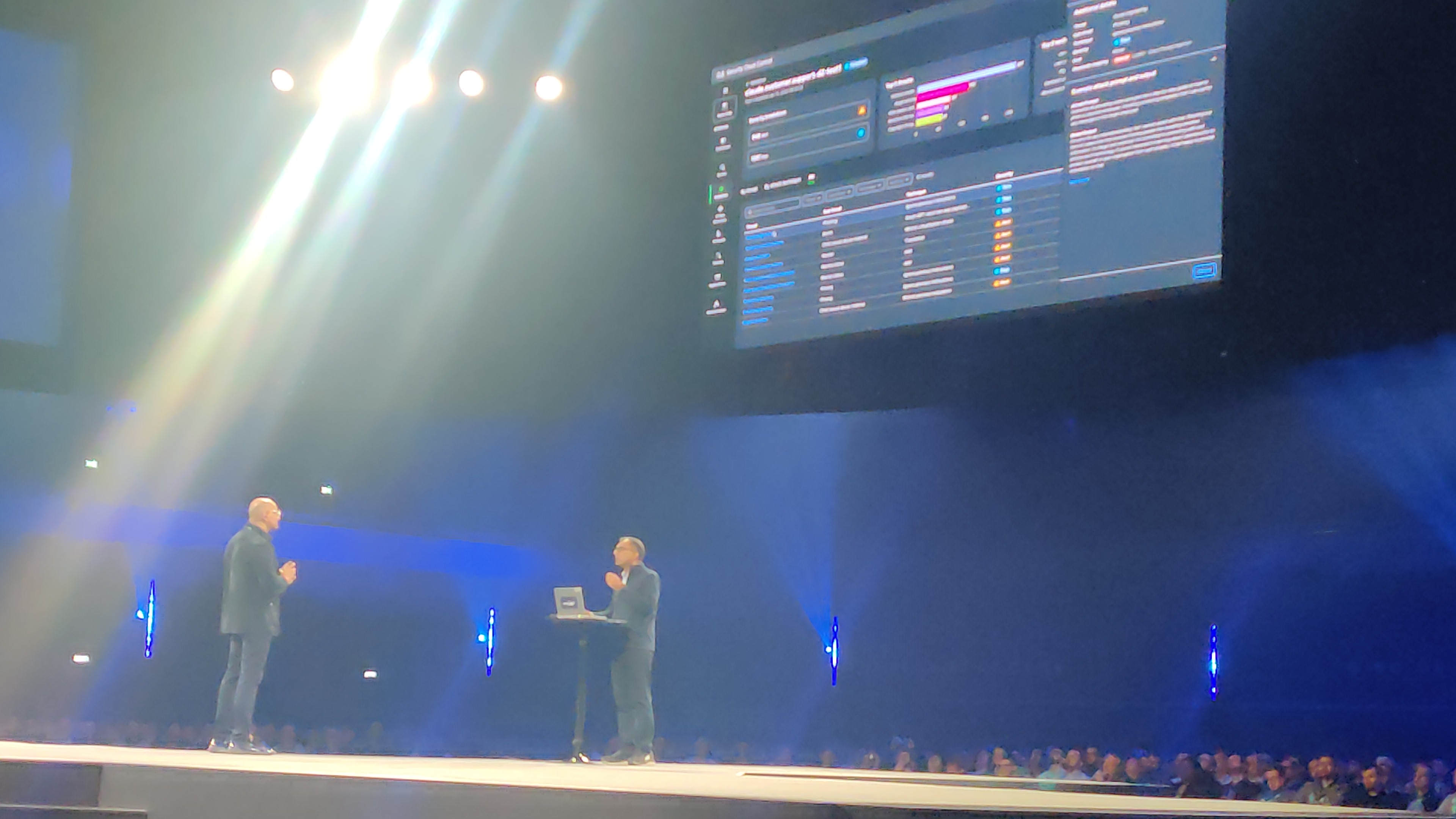
Sampath explains that AI Defense shrinks the validation time, that would normally take a model maker seven to ten weeks but with Cisco AI Defense this process takes just minutes.
Sampath explains that businesses can configure their access policies for external AI, but also their privacy and safety guardrails for internal systems which can detect and block violations at runtime.
Deepseek gets a mention as it has recently been widely covered that the model is particularly vulnerable to jailbreaking.
Sampath says Cisco used its jailbreaking techniques that are integrated into AI Defense's vulnerability testing system to put Deepseek through its paces and found it was vulnerable to 100% of the attack methods the system implemented.
That's it from Sampath, and Patel changes pace with some announcements for Cisco's connectivity range and reimagining the workplace.
He announces a a series of new Cisco of new access points, specifically designed to work with WiFI 7.
He rolls a video featuring SAP with over 250 offices around the world, and expects having upwards of 350,000 devices, including IoT devices on its network.
The SAP spokesperson says using CIsco's switches and access points it has been able to make its network simpler, using Cisco's zero friction to improve their trust access policy, ensuring that all trusted devices have access to corporate resources.
Cisco is extending its its zero trust network access (ZTNA) offering with Hybrid Private Access that will optimize the office experience without compromising data privacy.
This comes in conjunction with Policy Assurance, which will enable enterprises to predict and prevent policy-related access disruptions.
This universal ZTNA of features deeper integrations with Google Chrome for the enterprise meaning unmanaged devices can be used more seamlessly, where third parties (contractors for example) don’t need to install additional software to gain access to their applications
This sounds like a very useful feature and will protect users as they connect to applications. It takes the traditional concept of zero trust access that centers around people and managed devices connecting to modern applications that will support one of these zero trust gateways,
Cisco claims its taking zero trust to the next level adding the capability to connect any user on any device in any location to any application.
Patel invites Colin Bannon, CTO at BT Business Services on stage to talk about how they have reimagined their workplace.
Bannon says as a CTO one thing he has learned to be true is that digital resilience is business resilience, and that without the network there is no plan B.
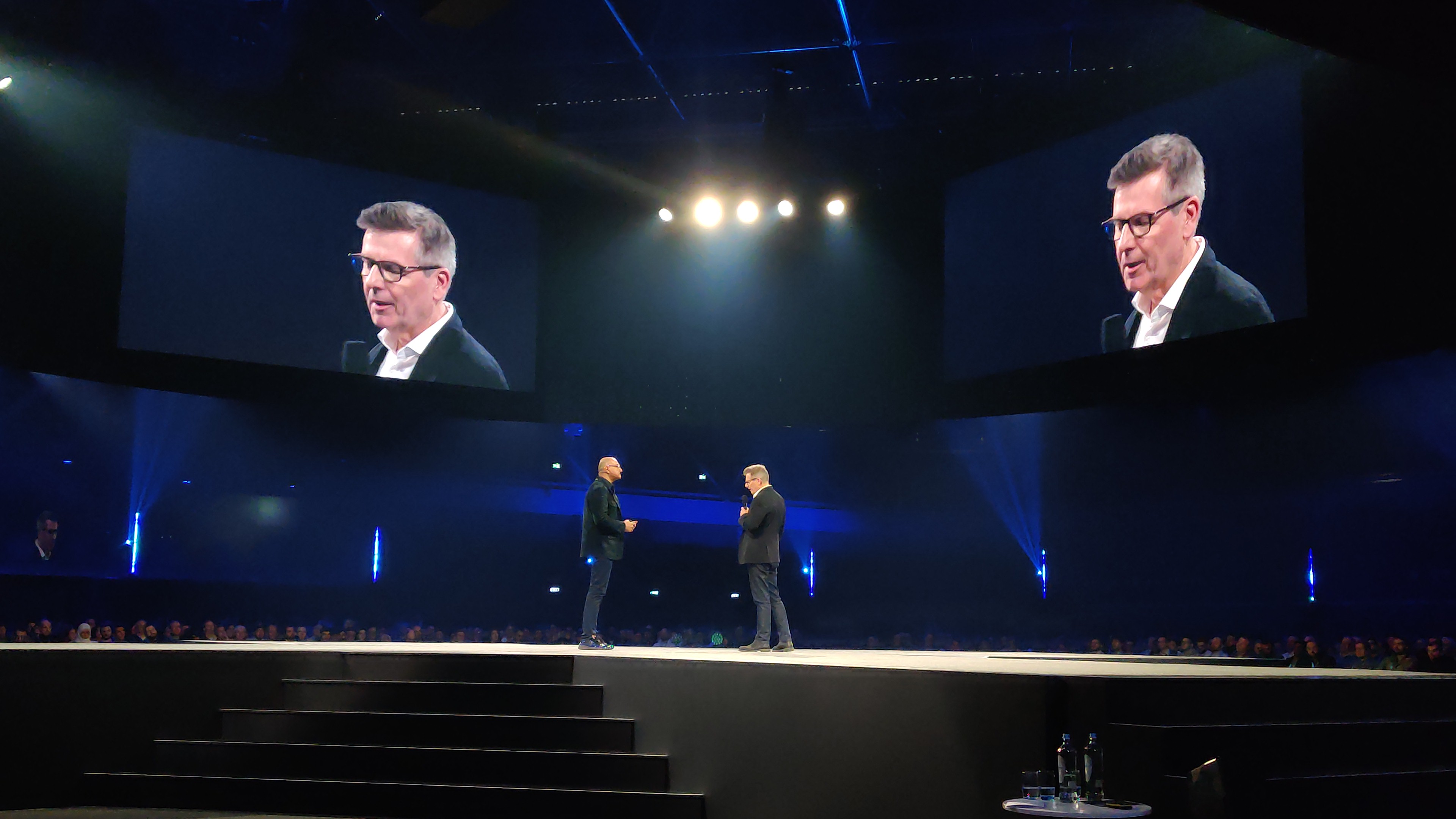
Bannon lists a series of critical organizations that rely on BT networksm, powering national critical infrastructure, and as such described Cisco as its fundamental partner underpinning this relationship.
He discusses redesigning the firm's offices, explaining it carried out persona-based designed according to apps, things, and people, baking in resilience to ensure that every aspect of the business as resilience and it can serve its customers reliably.
Asked what's next, Bannon says CIOs he's talking to are very afraid of shadow AI and byod, and having a network that can manage this access in an efficient way is essential.
Businesses need these fine-grained controls, Bannon explains. He also touches on the importance of AI-ready networks, making sure the network can stand up to unexpected spikes on the network and ensuring they are ready for unprecedented AI adoption.
Patel now wants to talk about Cisco's new optics system.
Patel says using Cisco's new optics opt, the size of a USB drive, which businesses can use to replace their entire optical system.
This promises to bring bring power efficiencies and latency gains.
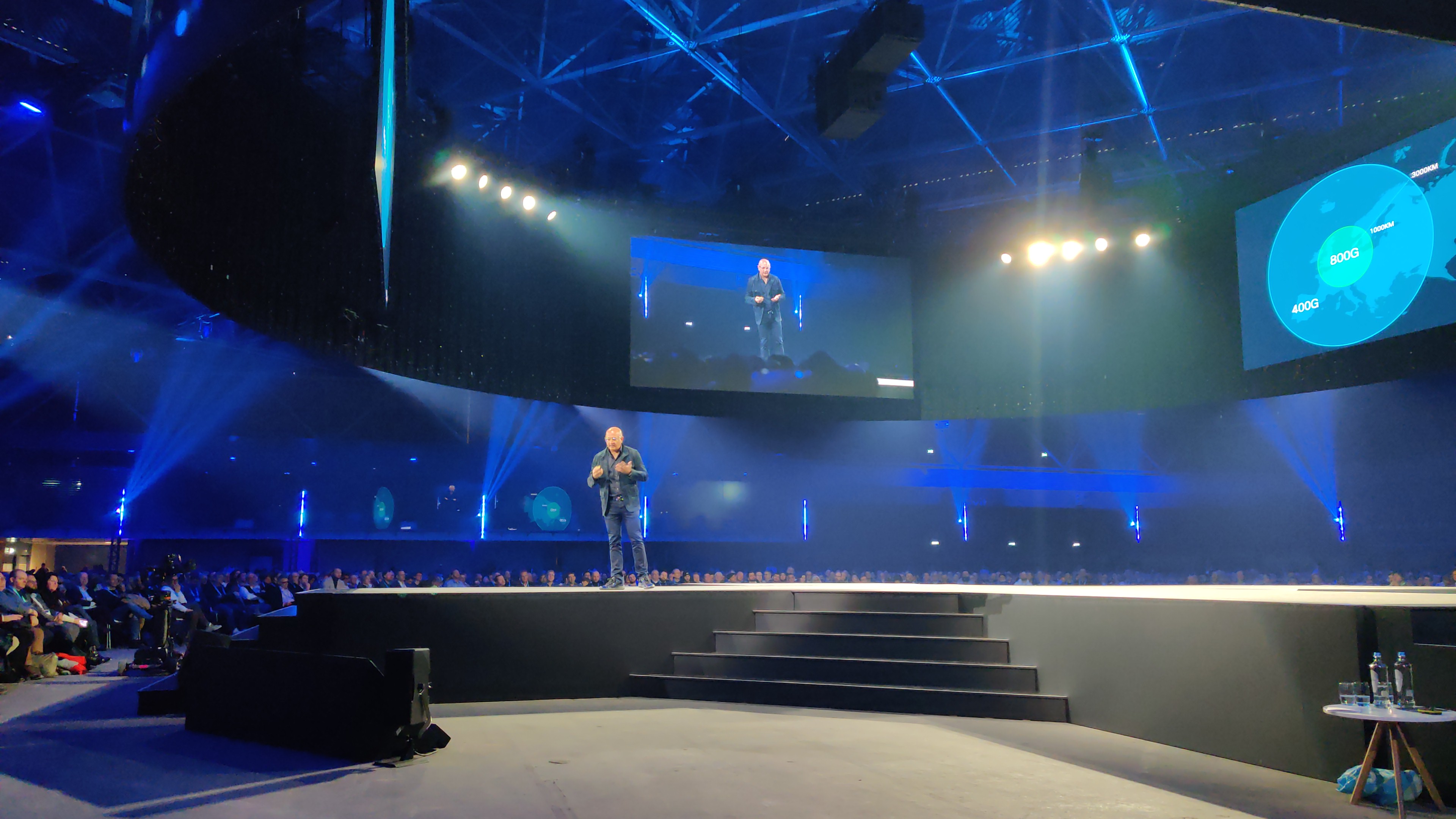
Martin Lund, EVP of Common Hardware Group at Cisco, and also inventor of the layer three networking.
Lund explains that it's it is going to be very hard to predict AI traffic, as companies can stand up new models all the time. Deepseek only accelerated this problem, and as such service providers need to be more flexible and agile and simplifying or converging their optical system will go some way to addressing this challenge.
To finish off today's keynote, Patel wants to talk about resilience and some of the new strides Cisco is making to help businesses stay resilient today.
Firstly, he announces ThousandEyes Traffic Insights which will provide deep visibility over network network traffic and not only identify suspicious suspicious behavior or potential disruptions but accelerate remediation too.
ThousandEyes Traffic Insights will be available in March, Patel announces
Finally, Patel announces the integration of its wireless arm Meraki with its XDR solution. This will mean organizations can feed their Cisco XDR with telemetry directly from their Meraki MX appliance.
As such XDR incidents will populate their Meraki dashboard and the administrators will have better visibility to take quick action against potential threats.
With that, Patel passes over to Tuszik, who joins us from via video link. He is on the floor of the exhibition center, which Cisco dub the World of Solutions.
Tuszik takes care of the closing ceremonies and brings the opening keynote to a close.
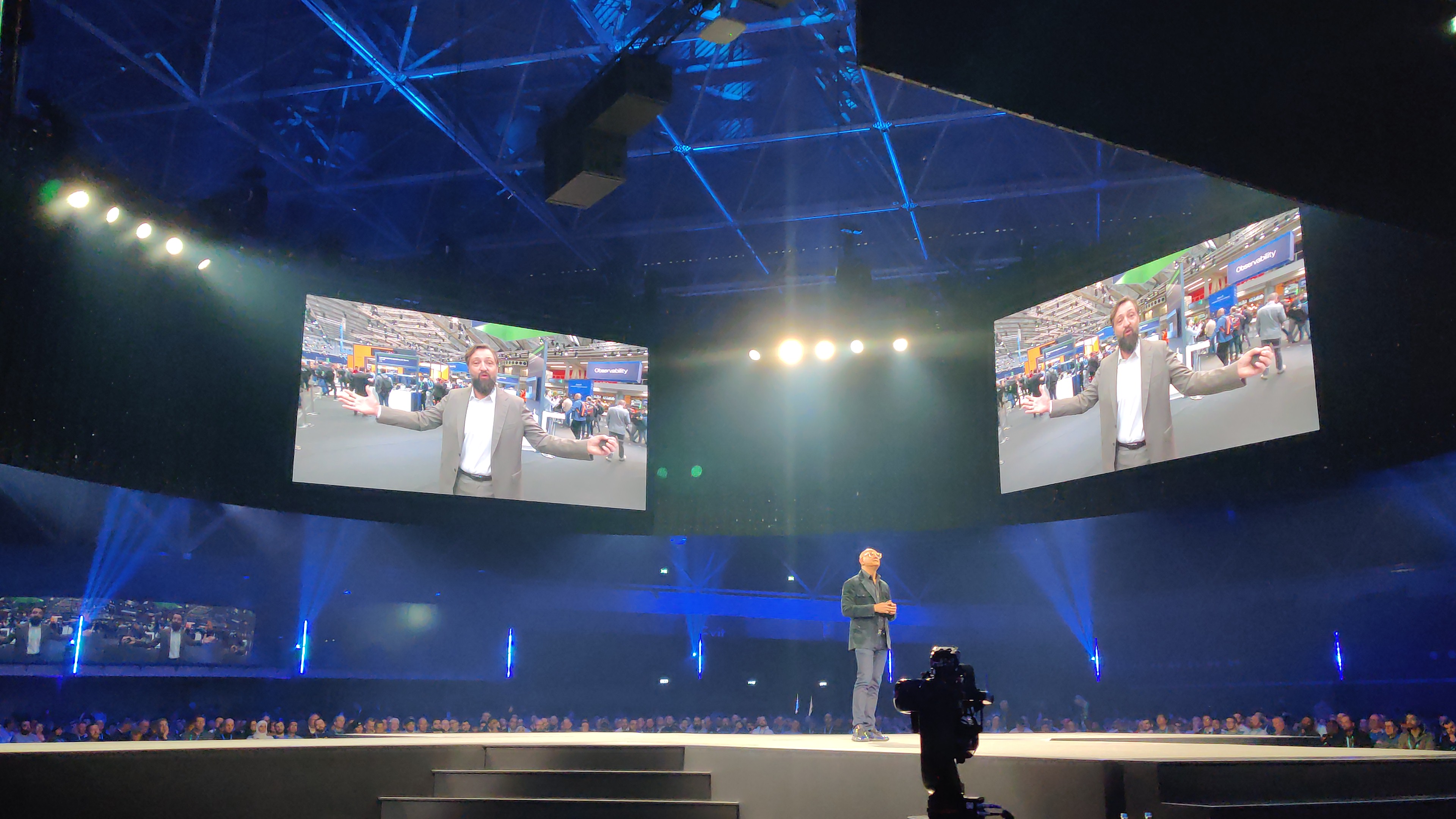
That was a veritable whirlwind of announcements and Cisco really packed a lot in to time they had.
Here's a quick summary of the biggest announcements from today's presentation:
- Cisco UCS C854A M8 server – AI server based on Nvidia's MGX reference architecture featuring a modular design to give organizations flexibilty and cost efficiency for their AI deployments.
- Cisco N9300 Smart Switches with Hypershield – first of their kind smart network switches featuring onboard DPUs to power advanced services directly on the network fabric.
- Cisco Hybrid Mesh Firewall – series of new advanced capabilities enabled by the N9300 Smart Switches that allow fine-grained control across distributed networks and various microservices.
- AI defense – Cisco's end-to-end solution for locking down generative AI use and development in the enterprise.
- Universal Zero Trust Network Access – extended ZTNA offering with hybrid private access to optimize office experience without compromising data privacy.
- Meraki MX integration with Cisco XDR – Merkai telemetry will now directly feed into Cisco's XDR which will populate incidents in the Meraki dashboard
- ThousandEyes Traffic Insights – unified solution offering deep visibility into how network traffic the performance of the network
We hope you enjoyed today's live coverage on the from the ground at Cisco Live EMEA 2025. Stay tuned for more great coverage from ITPro diving deeper into the announcements and what they mean for businesses around the world.
